SAIT students design and build drone to tackle space debris in national challenge
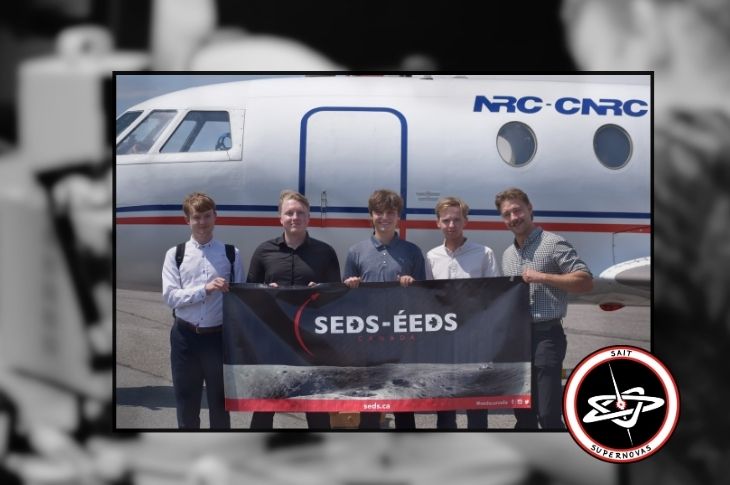
They reached for the stars, worked hard and took to the skies on a modified Falcon 20 (Photo by SEDS-Canada)
They call themselves the SAIT Supernovas — and they’re the first team from a polytechnic to participate in the Canadian Reduced Gravity Experiment Design Challenge, also known as CAN-RGX.
The challenge takes place annually and is hosted by Students for the Exploration and Development of Space (SEDS Canada) in partnership with the National Research Council (NRC) and the Canadian Space Agency (CSA).
The Supernovas, founded and led by SAIT Mechanical Engineering Technology student Sam Relja, chose to research how an electrically powered unmanned aerial vehicle, or drone, could perform in microgravity for their project. The idea was to test whether a scaled-up version, big enough to pick up pieces of inactive satellites or space equipment, could help address the growing problem of space pollution.
Meet the Supernovas
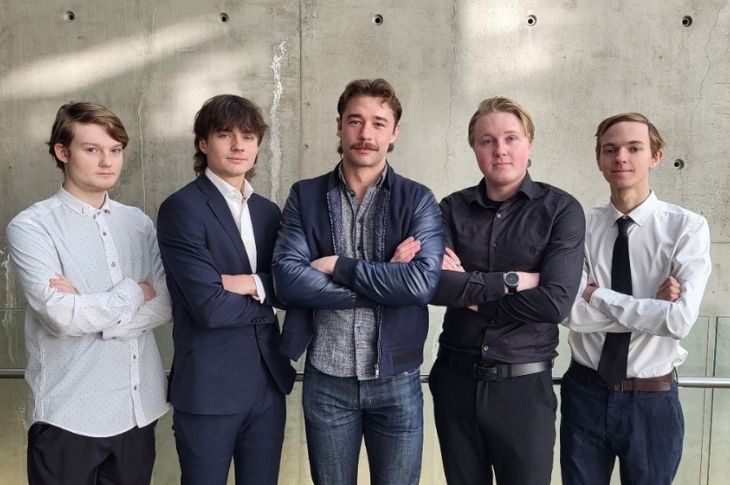
From left to right: Ethan Good, Electronics Engineering Technology; Isaac Richardson, Mechanical Engineering Technology; Samuel Relja, Supernovas founder, Mechanical Engineering Technology; Leif Teigen, Mechanical Engineering Technology; Kylan Mazak, Electronics Engineering Technology (Photo by SAIT Supernovas)
Now it in its seventh year, the goal of CAN-RGX is to expose post-secondary students to an engineering and design challenge, and provide connections to subject-matter experts in Canada, specifically at the NRC and CSA.
Teams apply and receive nine months to design and present their project.
In the fall of 2023, Olga Malikova, Academic Chair of SAIT’s Engineering Technology programs, introduced the challenge to Relja — who seized the opportunity, formed a team and got to work.
After months of hard work and research, the Supernovas returned from testing their project in simulated microgravity created by a series of parabolic flight patterns onboard the NRC’s modified Falcon 20 aircraft. The flight took place at the Canadian Space Agency headquarters in Longueuil, Quebec, where they also received a special tour.
“If someone had told me two years ago I would do zero-gravity research with the Canadian Space Agency and the NRC, I would probably have laughed at them,” says Relja. “It’s such an amazing competition. I love that we were able to not only participate, but to impress people there.”
Drones in space
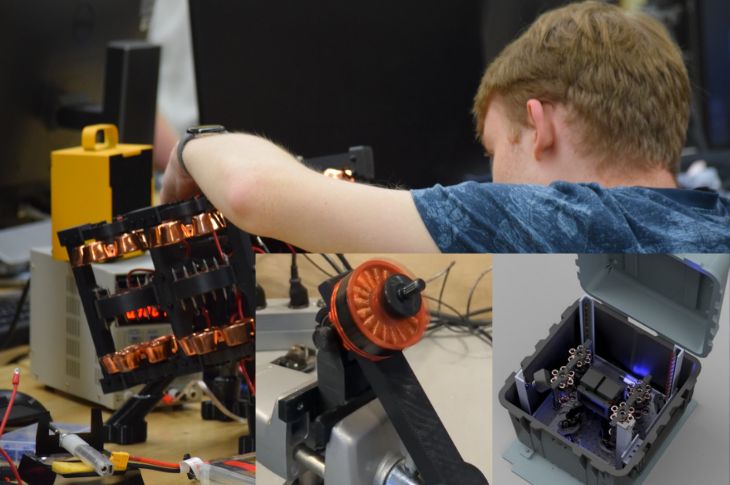
Photos by SEDS-Canada and SAIT Supernovas
A drone can’t fly in space using propellers because there’s no atmosphere and no air to move the vehicle forward.
To create movement, the team used electrohydrodynamic ion thrusters and stabilized the drone with a mechanical and digital gyroscope. A gyroscope, which looks like a spinning wheel, allows the device to maintain its orientation no matter where it moves.
The Supernovas faced several design and build challenges, but the biggest challenge was actually connecting all the parts — for example, the battery to custom-printed circuit boards or the microcontrollers that control the speed of the spin to the gyroscopes.
According to Relja, that was the real puzzle, and that’s only scratching the surface of their complex design. They also 3D-printed components, coated materials, integrated ozone tracking and the list goes on.
All aboard the vomit comet
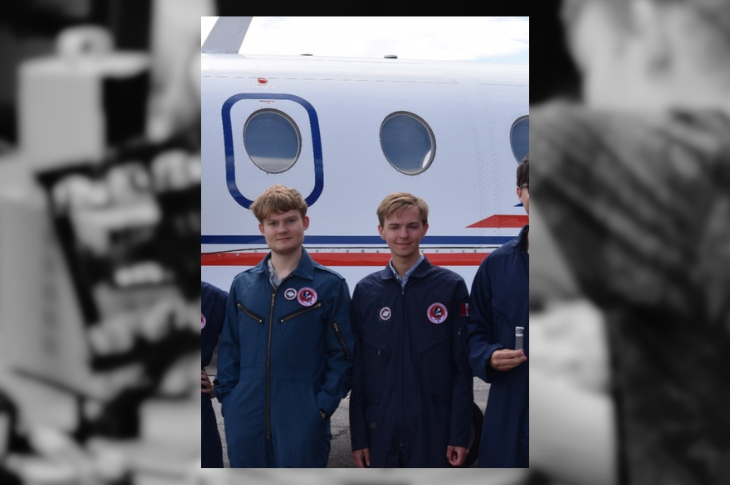
Photo by SEDS-Canada
The modified Falcon 20 aircraft is nicknamed “the vomit comet,” because its occupants — particularly new ones — often get queasy during the flight. It’s like riding a rollercoaster, except you’re experiencing the pulls of gravity for 20 seconds, as opposed to only a couple.
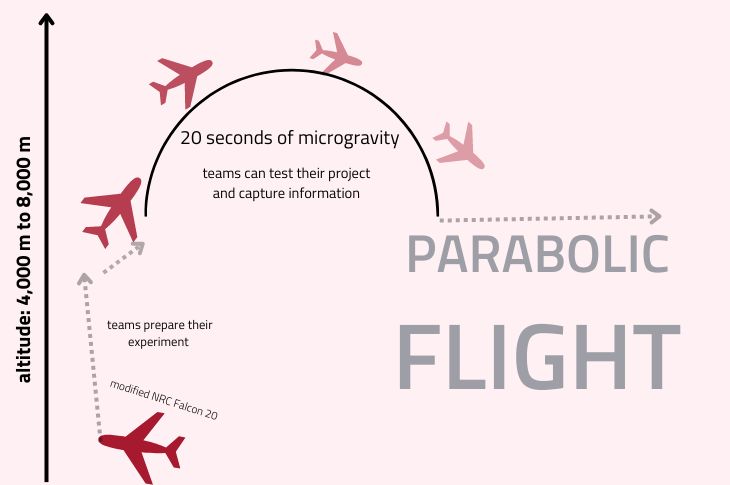
“Truthfully, nothing can really compare to it,” says Relja. “I remember, at one point in the flight, I actually thought the plane was upside down.”
The teams even got to experience the floating sensation you might get in space, unbuckling their seatbelts to reach the roof of the aircraft.
A competition that connects to the aerospace industry
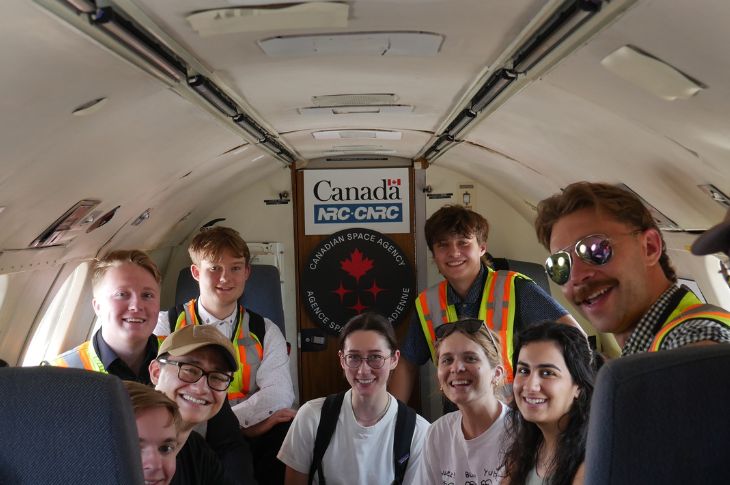
Photo by SEDS-Canada
The Supernovas designed and tested their project with support from SAIT instructors knowledgeable in materials science, as well as expert input from their sponsor, Lockheed Martin.
Reduced-gravity research projects were also presented by teams from the University of Alberta, Carleton University and the University of Waterloo.
Fund your research project
Do you have a research project, a team and a dream needing financial support? You can build a crowdfunding page like the SAIT Supernovas. Find out more about student fundraising.
An experience like no other
As the first team from a technical school to participate in the CAN-RGX challenge, the Supernovas proved they definitely belong.
Following a first look at their design, SEDS wasn’t sure the project would fly. But the team was confident they could make it happen.
“Never have I doubted that we could produce something that works and make it to the competition,” say Relja.
In the end, the hard work and all the hours paid off. There isn’t an official winner of CAN-RGX, but the experience will be forever etched on Relja’s memory — and the memories of time spent with his teammates. Plus, they made a big impression on organizers.
“I don’t think we’ve seen an experiment this complex proposed,” says Connor McNeill, SEDS Projects Chair.
“By the preliminary design stage, [the Supernovas] were already at stage two [out of four] of the challenge. By stage four, they had already developed a full ionic-thrust drone, which was very impressive,” he says.
“They did a great job. Their specific drone could fly in sub-orbital flight. It’s definitely a viable technology.”
A few members of the team have expressed interest in re-applying for the challenge next year so they can finesse some of the aspects of their design and fill in data gaps.
Who knows? Some starry night in the future, you might be able to look up and know a drone designed on Earth by a team of SAIT students is jetting around fighting space pollution.
Aim for the moon
If the idea of designing a product that solves a real-world problem sounds like it’s written in the stars for you, consider hands-on learning with a Mechanical Engineering Technology or Electrical Engineering Technology diploma.
Mechanical Engineering TechnologyCommitment to Excellence
We prepare students for successful careers and lives.
SAIT'S
2020-2025
Strategic plan

Oki, Âba wathtech, Danit'ada, Tawnshi, Hello.
SAIT is located on the traditional territories of the Niitsitapi (Blackfoot) and the people of Treaty 7 which includes the Siksika, the Piikani, the Kainai, the Tsuut’ina and the Îyârhe Nakoda of Bearspaw, Chiniki and Goodstoney.
We are situated in an area the Blackfoot tribes traditionally called Moh’kinsstis, where the Bow River meets the Elbow River. We now call it the city of Calgary, which is also home to the Métis Nation of Alberta.